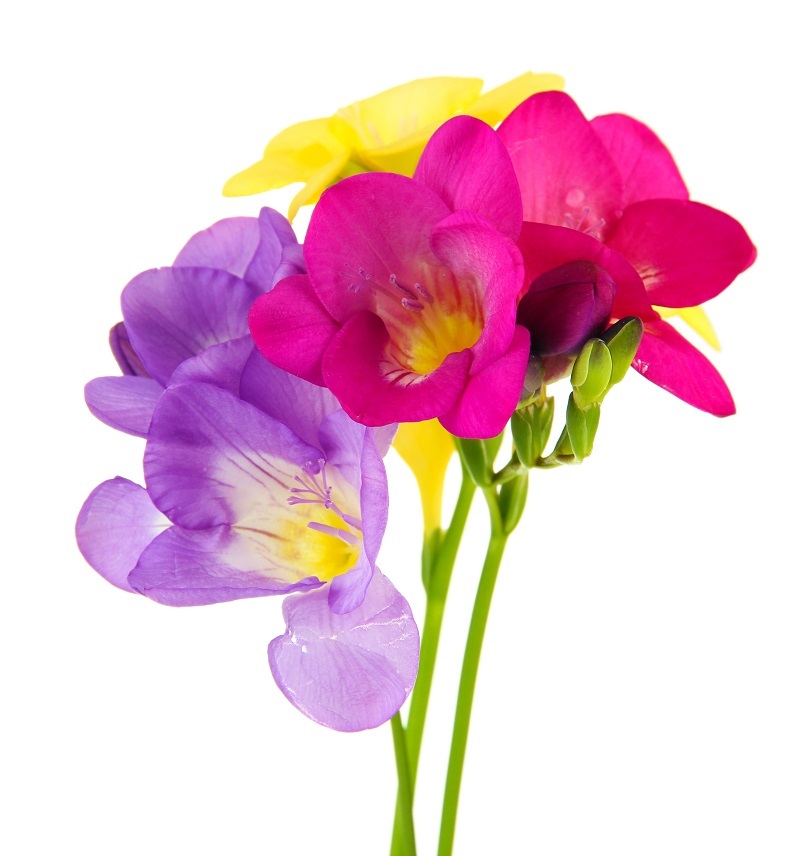8 Mind-Blowing Facts You Never Knew About Sunflowers
Posted on 22/08/2025
8 Mind-Blowing Facts You Never Knew About Sunflowers
Sunflowers are much more than just beautiful, golden blossoms that brighten up gardens and fields. While their vibrant petals and towering stalks are a familiar sight, there are countless intriguing and little-known truths hiding behind their sunny facade. If you think you know all there is to know about sunflowers, prepare to have your mind blown! This comprehensive article will unveil eight fascinating facts about sunflowers, explore their cultural significance, and highlight their importance in science and sustainability. Dive in and discover why these cheerful giants are truly extraordinary.
1. Sunflowers Track the Movement of the Sun
One of the most astounding and well-known sunflower facts is their unique ability to follow the sun's movement across the sky. This phenomenon is called heliotropism.
How Heliotropism Works
- Sunflowers' young shoots face east in the morning and slowly turn west as the sun moves.
- During the night, they reorient themselves to face east again, ready for the next sunrise.
- Once sunflowers reach maturity, their stems stiffen, and they generally remain facing east, which attracts more pollinators and offers other benefits.
Why do sunflowers track the sun? This adaptation maximizes the amount of sunlight that the plant receives, increasing photosynthesis, which is critical for growth. For readers searching for sunflower interesting facts, heliotropism is one phenomenon that showcases how dynamic these plants truly are.

2. Sunflowers Are Native to North America
While sunflower fields are now found across the world, the origin of sunflowers traces back to North America. Archaeological evidence suggests Native Americans first grew and domesticated sunflowers over 4,500 years ago.
Uses in Indigenous Cultures
- Native Americans utilized sunflower seeds for food, oil, and flour.
- Sunflowers served medicinal and dye-making purposes.
- The flower was integral in ceremonial and spiritual practices.
Modern Day Cultivation: Despite being native to North America, today, the chief producers of sunflowers include Russia and Ukraine. In fact, these two countries together produce more than half of the world's sunflower oil, an essential vegetable oil for millions.
3. Sunflower Heads Are Composed of Thousands of Tiny Flowers
When you gaze upon a sunflower, it may appear to be a single, giant bloom. In reality, each sunflower head is from 1,000 to 2,000 tiny flowers--scientifically called florets--clustered together.
The Science of Composite Blooms
- The outer bright petals are known as ray florets and do not produce seeds.
- The real magic happens with the disk florets in the center; each one can turn into a seed when pollinated.
- This intricate design belongs to the Compositae or Asteraceae family, a group famous for its composite flower structures.
Understanding that a sunflower is not a single flower but a collection of hundreds of tiny blooms is truly one of the most intriguing sunflower facts for those wanting to appreciate its complexity.
4. Sunflowers Offer Impressive Edible and Medicinal Benefits
Sunflowers are more than just aesthetically pleasing; they offer health benefits as well! Their seeds and oil are nutritional powerhouses:
Health Benefits of Sunflower Seeds
- Packed with vitamins E, B1, and B6, as well as minerals like magnesium and selenium.
- High in healthy fats: The seeds are a rich source of polyunsaturated and monounsaturated fats, great for heart health.
- Antioxidant properties: The vitamin E content helps protect body tissues from oxidative damage.
Did you know? Some traditional medicines use different parts of the sunflower plant as remedies for wounds, joint pain, and respiratory ailments. With such versatility, it's no wonder this plant is cherished around the world!
5. Sunflowers Can Absorb Toxic Materials from the Soil
Perhaps one of the most mind-blowing facts about sunflowers is their role in environmental cleanup--a process called phytoremediation. Sunflowers have been planted at sites affected by nuclear disasters and other pollution crises due to their ability to extract toxins from the earth.
Key Cases of Sunflower Phytoremediation
- After the Chernobyl and Fukushima nuclear disasters, sunflowers were used to help remove dangerous heavy metals like lead, arsenic, and uranium from the soil.
- This ecological benefit makes sunflowers a symbol of hope and renewal, demonstrating their value beyond the garden or vase.
Why does this matter? Sunflowers' cleansing properties provide a sustainable solution for helping communities recover environmentally after disasters--an especially relevant and contemporary use for this iconic plant.
6. The Tallest Sunflower Reached a Record-Breaking Height
Sunflowers are renowned for their impressive stature, but did you know just how tall they can get?
- The Guinness World Record for the tallest sunflower stands at an astounding 9.17 meters (over 30 feet), grown by Hans-Peter Schiffer in Germany in 2014.
- This jaw-dropping feat is the result of optimal soil, nutrients, and careful cultivation.
Gardeners around the globe challenge themselves annually to grow taller and hardier sunflowers, making them a lively part of gardening competitions and botanic exhibitions. If you think your sunflowers are impressively tall, there may be a new record awaiting you!
7. Sunflowers Inspire Artists, Scientists, and Cultures Alike
The sunflower's bright, cheerful appearance has made it a symbol of loyalty, adoration, and vitality in many ancient and modern cultures. Its influence reaches far beyond agriculture and gardening.
Symbolic and Artistic References
- Famous Dutch painter Vincent van Gogh created his iconic series of sunflower paintings between 1888 and 1889, revolutionizing modern art.
- Sunflowers are the state flower of Kansas, a central motif in state symbolism and pride.
- In literature, sunflowers are often used to emphasize joy, resilience, and spiritual enlightenment.
This wide cultural reach adds another layer of fascination, revealing the deep connection between sunflowers and the human story.
8. Sunflowers Contain an Intricate Fibonacci Pattern
If you peer closely at the seed arrangement in the head of a sunflower, you'll notice the seeds form a spiral pattern. This is not random--in fact, it follows the Fibonacci sequence, a famous mathematical series!
Why Does This Happen?
- As seeds develop, they grow at an angle of approximately 137.5 degrees, known as the "golden angle."
- This efficient spiral ensures maximum packing of seeds in the limited space--an astonishing natural feat!
- Mathematicians and biologists alike study sunflowers to learn more about efficiency in nature and the manifestation of the golden ratio in living organisms.
For those interested in amazing sunflower facts, this marriage of nature and mathematics is nothing short of mind-blowing!

Bonus: More Fascinating Sunflower Facts
Can't get enough of sunflower trivia? Here are a few extra nuggets of knowledge to feast your mind on:
- Sunflowers help attract pollinators like bees and butterflies, supporting biodiversity.
- They come in more colors than you might expect--including red, orange, and even white varieties.
- Sunflowers can be processed into alternative energy sources, such as biodiesel fuel.
Conclusion: The Enduring Magic of Sunflowers
Sunflowers are one of nature's true marvels--offering more than meets the eye. These mighty plants are botanically fascinating, ecologically beneficial, nutritionally valuable, and culturally iconic. Whether you love growing sunflowers in your backyard, enjoying their seeds as a healthy snack, or admiring them in art, there's no denying their special place in the world.
Hopefully, these mind-blowing sunflower facts have enriched your appreciation for this incredible species. The next time you see a field full of golden blooms, you'll know just how remarkable each sunflower truly is, from the secrets written in its DNA to the stories that span human history.
Is there a fascinating sunflower fact you think should make the list? Share your thoughts in the comments below and continue exploring the amazing world of sunflowers!
Latest Posts
Discover the Origins of Valentine's Day Red Rose Traditions
Unlock the Blooms That Represent Your Nature
8 Mind-Blowing Facts You Never Knew About Sunflowers
Journey into the fascinating world of tulips with these 7 facts





